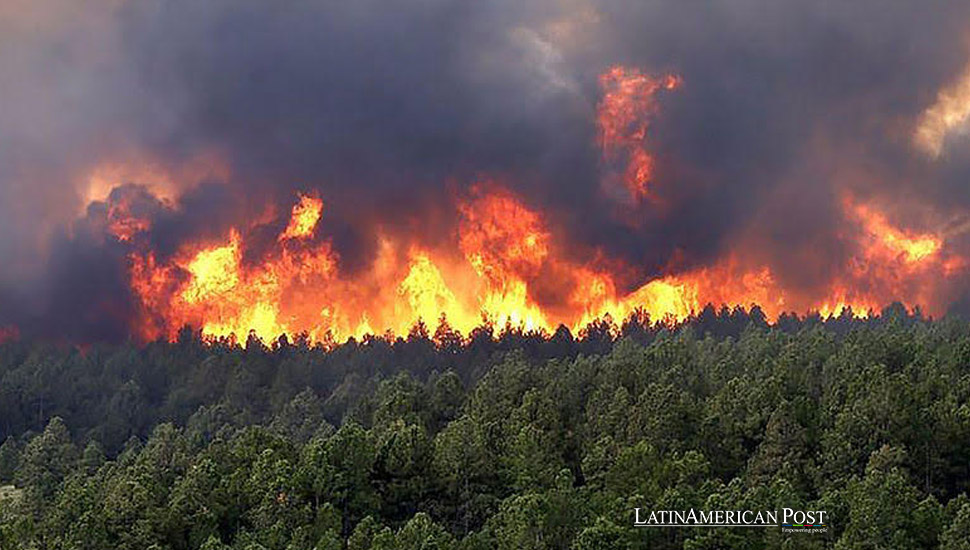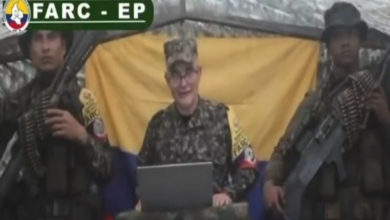Colombia Battles Devastating Fires Amid Latin America’s Worsening Drought

Colombia faces raging forest fires across multiple regions as the worst drought in decades continues to fan flames throughout Latin America. The crisis spans several countries and threatens forests, food supplies, and public health.
Colombia’s Battle Against Widespread Fires
Colombia is in the grips of one of its worst fire seasons in recent memory, with devastating blazes ravaging more than 11,000 hectares (27,000 acres) across seven departments. Forest fires have erupted from the Andean highlands to the borders with Ecuador, Peru, and Brazil, threatening ecosystems and human communities alike. According to Colombia’s National Unit for Risk and Disaster Management, the country has deployed all available resources, including eight airplanes, to combat the fires in regions like Tolima, where the village of Nagataima has been hit particularly hard.
The fires have destroyed large swaths of forest and taken a human toll. In Tolima, two people were injured due to the spreading flames. Local authorities have warned surrounding areas, urging residents to evacuate if necessary while continuing to monitor the spread of the fires. With the scorching heat showing no signs of abating, Colombia braces itself for more challenges. The fires threaten to spread further, given that some affected departments are near Ecuador, Peru, and Brazil—countries also battling severe drought and fire outbreaks.
The drought, which has exacerbated the fires, has reduced water supplies, making it even more challenging to manage and control the blazes. The country’s rivers, including portions of the Amazon, have dried up significantly, impacting the local population’s access to water and food. As Colombia fights the flames, its neighboring countries face similar struggles, compounding the crisis across the region.
Latin America Gripped by Decades-Worst Drought
The fires in Colombia are part of a broader regional problem. Across Latin America, the worst drought in decades has set the stage for an unprecedented fire season. In Ecuador, the drought has triggered the worst water crisis in 61 years, leading to widespread power outages and rationing across 12 provinces. The Ecuadorian government announced planned blackouts from Monday to Thursday to conserve water resources. Due to the lack of rainfall, hydroelectric power supplies are dwindling. Meanwhile, fires threaten the country’s forests, adding pressure to an already overwhelmed system.
Peru, too, has declared a 60-day state of emergency in three jungle departments that border Brazil and Ecuador. These areas have been ravaged by fires, further straining resources as residents grapple with the lack of food and clean water. As the drought lowers river levels across the region, food supplies are dwindling, and the spread of diseases is becoming a growing concern.
Brazil, the largest nation in South America, has been particularly hard-hit. Wildfires have consumed millions of hectares, spanning from the Amazon rainforest to the Pantanal wetlands. The drought has transformed parts of the Amazon into tinderboxes, and the fires have led to plumes of smoke that cloud the skies of major cities like Rio de Janeiro, Brasilia, and São Paulo. In some instances, the smoke has even drifted across borders, affecting neighboring Argentina and Uruguay.
While many fires are deliberately set by farmers clearing land for agriculture, the scale of destruction is unprecedented. In Brazil’s Madeira River region, drought-stricken residents are finding themselves walking across dried-up riverbeds where they once navigated by canoe. The rapid decline of water levels has left communities struggling to access basic services such as healthcare, food, and schooling.
From Power Outages to Water Shortages
As the drought and fires rage across Latin America, the impacts extend far beyond environmental damage. Ecuador’s hydroelectric-dependent energy grid is struggling to cope with the prolonged dry spell, leading to rolling blackouts across multiple provinces. Nightly power cuts have become a grim reality for millions of Ecuadorians, who are forced to ration energy as part of the government’s strategy to safeguard water supplies. In the face of 71 consecutive days without rainfall, Ecuador’s agricultural sector is also suffering, raising concerns about food security in the coming months.
In Peru, the declaration of a state of emergency highlights the severity of the situation in jungle regions that border Brazil and Ecuador. With the fires blazing and the Amazon River at historically low levels, indigenous and rural communities are increasingly isolated from vital resources. The decline in river flow has severely disrupted fishing, the primary source of food for many, and has worsened health conditions as clean water becomes scarce.
Brazil’s plight is similarly alarming. The drought has dried up major waterways like the Madeira River, leaving communities cut off from essential goods and services. Farmers and residents in the region are facing the harsh reality of navigating dried-out riverbeds on foot, as the water levels have plummeted to unprecedented lows. The fires, fueled by the drought, continue to scorch the Amazon rainforest and other critical ecosystems, releasing vast amounts of carbon into the atmosphere and exacerbating climate change.
The environmental destruction also has significant economic consequences. Agriculture, a key industry in many Latin American countries, has been severely affected as crops fail, livestock suffer, and entire communities are displaced. The cost of managing these fires, in addition to the long-term recovery efforts, will strain already fragile economies. Governments are calling for international aid, as they struggle to contain the damage and support affected populations.
Climate Change and the Future of Fire Management
Experts widely attribute this unprecedented drought and fire season to the effects of climate change. Rising global temperatures have altered weather patterns, leading to longer, more intense dry spells in regions like the Amazon, which is crucial for regulating the planet’s climate. As drought conditions worsen, the likelihood of more frequent and destructive fires increases, leaving governments with the daunting task of adapting fire management strategies.
Brazil, in particular, has become a focal point in the global conversation on climate change. The destruction of the Amazon rainforest—often referred to as the “lungs of the Earth” due to its role in absorbing carbon dioxide—has alarmed environmentalists worldwide. Fires deliberately set by farmers clearing land for agriculture have only worsened the situation. The Brazilian government is under increasing pressure to enforce stricter environmental regulations and prevent further deforestation.
However, fire management in Latin America faces numerous challenges, particularly in rural and remote areas where resources are limited. Many communities lack the infrastructure to effectively fight fires, and as climate change intensifies, the risk of overwhelming local firefighting efforts grows. The interconnectedness of ecosystems means that what happens in one country can have ripple effects across the region, making coordinated international action more important than ever.
In response to the crisis, there have been calls for greater investment in fire prevention and mitigation strategies, including improved early warning systems, better resource management, and stronger policies to combat illegal deforestation. Governments across Latin America are also increasingly recognizing the need to work together, sharing knowledge and resources to address the common threat posed by climate change and uncontrolled wildfires.
As Latin America grapples with the devastating impacts of its worst drought in decades, forest fires continue to burn across the region, threatening both human lives and the environment. From Colombia’s battle to contain fires in multiple departments to Brazil’s vast Amazonian infernos, the situation is dire. While authorities are mobilizing to fight the blazes and mitigate the damage, the underlying issues—such as climate change and unsustainable land practices—must be addressed to prevent future catastrophes.
Also read: Peru Strengthens Fire Prevention at Kuélap Amid Rising Wildfires
The fires consuming Latin American forests are a stark reminder of the urgency required to combat climate change. As rivers dry up, food supplies dwindle, and smoke fills the skies, governments and communities are struggling to adapt to a rapidly changing world. The lessons learned from this fire season will be crucial in shaping future policies, not only in Latin America but globally, as the world confronts the growing threat of environmental disaster.





